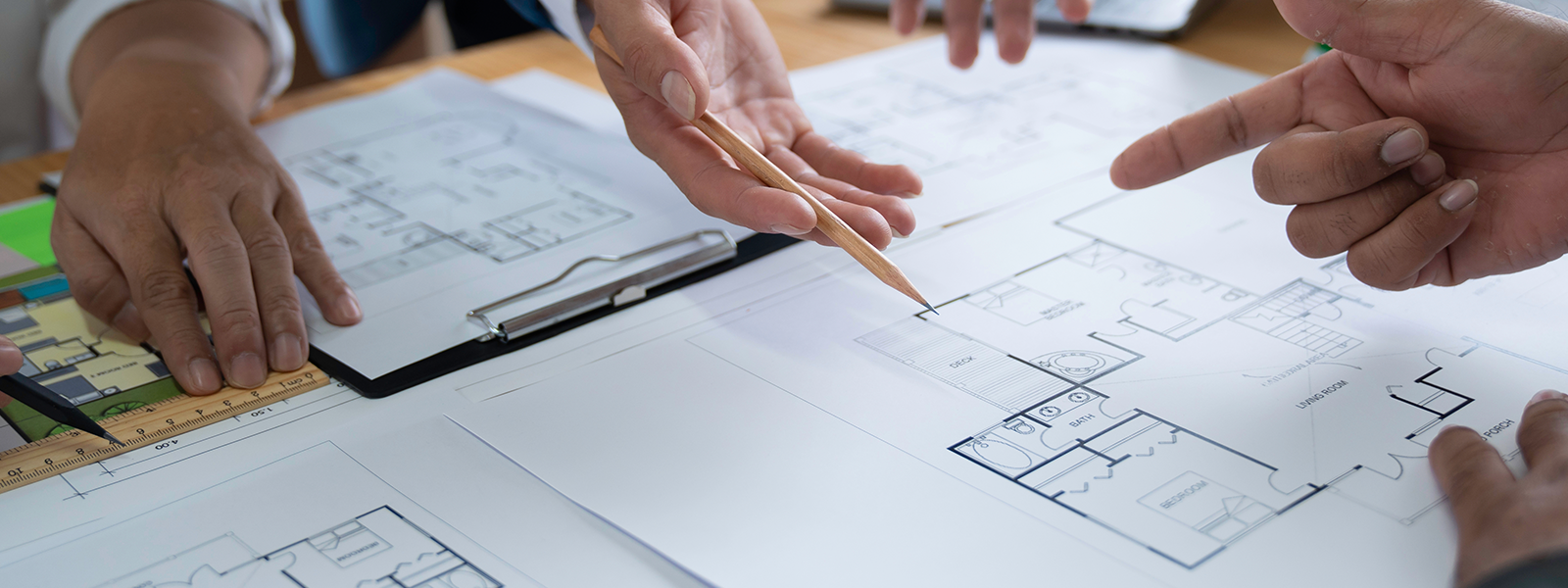What is Carpet Area, Built-up Area and Super Built-up Area: What's the Difference? (2025 Guide)
October 16, 2025 in Property Guide

In the real estate sector, accurate measurements of different areas play a crucial role. Understanding the distinctions between various types of area measurements is essential for both buyers and sellers. Three commonly used area measurements are carpet area, built-up area, and super built-up area.
While all three measurements are important, the carpet area holds particular significance as it directly reflects the usable space for the occupants. It provides a clear understanding of the livable area and helps buyers assess the value and functionality of a property accurately. Therefore, it is crucial for buyers and sellers to be well-informed about how to measure and calculate carpet area.
Let’s understand all three area types further including their importance and the calculation method.
What is carpet area?
Carpet area refers to the actual usable space within a property, excluding the thickness of walls. It represents the area on which one can place a carpet. This measurement provides a realistic estimate of the space available for living or working purposes. Calculating the carpet area involves measuring the internal dimensions of a property.
How to calculate carpet area?
Here's a step-by-step guide on how to measure carpet area:
Measure the length and width of each room
: Let's consider a bedroom with a length of 12 feet and a width of 10 feet.Multiply the length and width of each room
: In our example, the bedroom's area would be 12 feet x 10 feet = 120 square feet.Sum up the areas of all rooms
: If there are three rooms with areas of 120 square feet, 150 square feet, and 80 square feet, respectively, the total carpet area would be 120 + 150 + 80 = 350 square feet.
Note: Apart from the bedrooms, common areas like the living room are also included when measuring the carpet area.
Importance of carpet area
Here are the key points highlighting the importance of carpet area in real estate:
Accurate Assessment of Usable Space
: The carpet area offers a realistic estimate of the actual living or working space available to occupants. It excludes the thickness of walls and provides a clear understanding of the area where all essential items like furniture can be placed.Transparency in Pricing
: The carpet area plays a crucial role in determining the value and pricing of a property. Since it represents the actual usable space, it serves as a fair basis for pricing negotiations.Evaluation of Efficiency and Functionality
: A carpet area helps assess the efficiency and functionality of a property. Buyers can determine the layout, room sizes, and storage space available within the carpet area.Legal and Regulatory Compliance
: In some jurisdictions, real estate regulations mandate the disclosure of carpet area to ensure transparency and protect the interests of buyers. Accurate representation of carpet area helps ensure compliance with legal requirements.Investment Potential
: The carpet area is a crucial factor for investors looking to rent or lease out a property. The usable space directly impacts rental returns and tenant preferences. Investors can gauge the potential rental income or resale value based on the carpet area.
=> Read Also:- 8 Essential Home-Buying Tips: Choose the Right One
What is the built-up area?
The built-up area includes the carpet area along with the thickness of the walls. It encompasses all enclosed spaces within the property, such as rooms, corridors, and balconies. Calculating the built-up area involves considering the internal dimensions and wall thickness.
How to calculate the built-up area?
Here's a step-by-step guide on how to calculate the built-up area:
Measure the length and width of each room
: Let’s consider a living room with a length of 15 feet and a width of 12 feet, and the wall thickness is 6 inches (0.5 feet) on each side.Add the wall thickness to the dimensions
: In our example, the adjusted dimensions of the living room would be (15 + 0.5 + 0.5) feet x (12 + 0.5 + 0.5) feet = 16 feet x 13 feet.Multiply the adjusted length and width of each room
: In our example, the living room's area would be 16 feet x 13 feet = 208 square feet.Sum up the areas of all rooms
: Add up the areas of all individual rooms to calculate the built-up area of the entire property.
Importance of the built-up area
Here are some key points highlighting the importance of built-up areas:
Comprehensive Space Assessment
: The built-up area provides a detailed measurement of the enclosed space within a property. This includes the rooms, corridors, balconies, and other enclosed areas.Pricing and Valuation
: The built-up area plays a crucial role in determining the value and pricing of a property. It serves as a key factor for calculating the cost per square foot and helps buyers compare properties more accurately.Legal and Regulatory Compliance
: RERA rules require the developer to provide full disclosure of the built-up area. This ensures transparency and compliance with legal requirements.Space Planning and Design
: The built-up area assists in space planning and design decisions. It helps architects and interior designers understand the available space and allocate it efficiently
What is a super built-up area?
The super built-up area extends beyond the built-up area and includes common spaces, amenities, and shared facilities like staircases, lobbies, and gardens. It represents the total area a buyer pays for, including their proportionate share of the common spaces.
How to calculate super built-up area?
Here's a step-by-step guide on how to calculate super built-up area:
Determine the built-up area
: Calculate the built-up area using the method mentioned earlier, which includes the internal dimensions of rooms along with the thickness of walls.Identify the common spaces
: Identify the proportionate share of these common spaces allocated to the specific property. This includes facilities like lobbies, staircases, passages, elevators, gardens, gyms etc.Add the proportionate share of common spaces
: For example, if the common spaces account for 10% of the built-up area of a property measuring 1,000 square feet, the additional area would be 1,000 square feet x 0.10 = 100 square feet.Calculate the super built-up area
: Add the built-up area obtained in Step 1 to the additional area calculated in Step 3. In our example, the super built-up area would be 1,000 square feet + 100 square feet = 1,100 square feet.
Importance of super built-up area
Here are some key points highlighting the importance of super built-up area:
Cost Calculation and Transparency
: The super built-up area serves as the basis for pricing and cost calculations. It includes not only the individual unit but also the shared spaces, such as lobbies, corridors, and amenities.Inclusion of Shared Facilities
: The super built-up area accounts for the proportionate share of common spaces and amenities. This ensures that the cost of maintaining and providing shared facilities is distributed among the buyers.Legal and Regulatory Compliance
: Many regions have regulations that require the disclosure of the super built-up area. This ensures transparency and compliance with legal requirements.Investment Considerations
: Investors in real estate often consider the super built-up area while assessing the rental income or resale value of a property. The inclusion of shared facilities and amenities enhances the property's market appeal and potential rentals.
=> Read Also:- Key Questions to Ask Yourself Before Buying a House
Difference between carpet area, built-up area, and super built-up area
Understanding the difference between carpet area, built-up area, and super built-up area is crucial in real estate. Here are the key distinctions among these measurements:
Carpet Area
: Carpet area refers to the actual usable space within a property, excluding the thickness of walls. It includes rooms, kitchen, bathrooms, and other enclosed areas. The carpet area provides the most accurate estimate of the space available for living or working purposes.Built-Up Area
: Built-up area includes the carpet area along with the thickness of walls. It encompasses all enclosed spaces within the property, such as rooms, corridors, balconies, and other areas. The built-up area considers the internal dimensions of the property, including walls, providing a comprehensive understanding of the actual enclosed space.Super Built-Up Area
: Super built-up area extends beyond the built-up area and includes common spaces, amenities, and shared facilities. It represents the total area a buyer pays for, including their proportionate share of the common spaces. The super built-up area is a more inclusive measurement that accounts for the overall space available to the buyer.Inclusions and Exclusions
: The carpet area includes only the usable space within the walls, excluding common spaces and shared areas. The built-up area includes the carpet area along with the walls, while the super built-up area further adds the proportionate share of common spaces and amenities.
Conclusion
Understanding the differences between carpet area, built-up area, and super built-up area is essential for anyone involved in the real estate sector. These measurements provide crucial insights into the usable space, pricing, and overall value of a property. Whether you're a buyer or a seller, being well-informed about these measurements enables you to make informed decisions and negotiate fair deals.
If you're looking for expert guidance and assistance in navigating the real estate market, contact Adani Realty today. The professionals here are ready to help you find the perfect property that meets your requirements and ensure a seamless experience. With projects in Ahmedabad, Mumbai, Pune & Gurgaon, you will never be short of options.
Frequently Asked Questions (FAQs)
Q1. What is the meaning of carpet area?
Ans. The net area of the space that can be covered by a carpet is called a carpet area. It excludes the area covered by walls, balconies, and common areas.
Q2. What is the meaning of the built-up area?
Ans. It is the total gross area of the house including carpet area, balcony, terrace, and other elements of the space. It is usually 10-15% more than the net carpet area.
Q3. What is included in the super-built area?
Ans. The super-built area is the saleable area that includes a net carpet area, balconies, terraces, a common area and more. Builders may include amenities as well so it's advisable that a buyer enquires about it beforehand.
Q4. What is a formula to calculate the built area?
Ans. Built-up area = Carpet area + Areas covered by walls. It is usually 10-15% more than the net carpet area.
Q5. What is the meaning of the RERA carpet area?
Ans. The net usable floor area of an apartment plus the internal walls is the RERA carpet area. It excludes terraces, verandahs, size of external walls and more.
Q6. Does the carpet area include a balcony?
Ans. Yes, the carpet area includes a balcony.
Q7. What is the difference between floor area and carpet area?
Ans. Floor area includes the total area covered by walls, while carpet area refers to the actual usable space within a property, excluding wall areas.
Looking for dream spaces, not sure where to start?
Leave us a query and our representative will get back to you.
Disclaimer
The Adani Realty expressly disclaims all liability in respect to actions taken or not taken based on any or all the contents of this Blog. The content of this blog is collation of data from various sources and is provided only for information purpose only and Adani Realty does not canvass the particulars, information, brand or any other materials mentioned in the blogs nor does it obtain any monetary benefit from the same.The Adani Realty shall in no circumstance be held liable for any expense, loss or damage including, without limitation, direct, indirect or consequential loss or damage, or any other expense, loss or damage whatsoever arising from the use of data, information, interpretation, judgement or opinion arising out of or in connection with the use of this Blog. Reader is advised to read and apply his/ her intellect and discretion in this regards.

